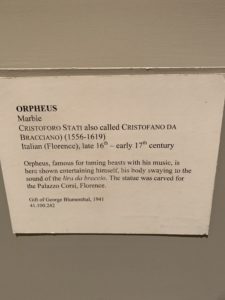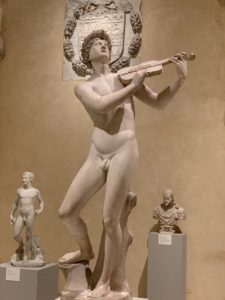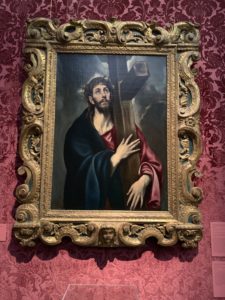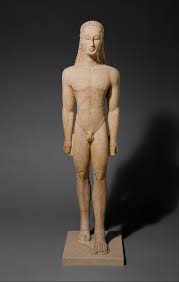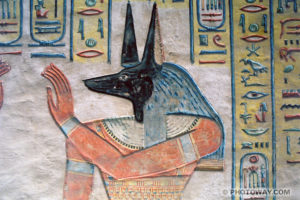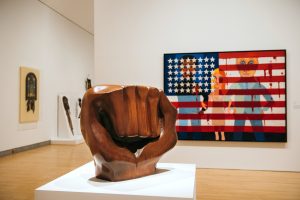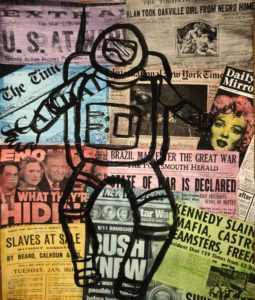
“Art of Deceit” by Kristine Veras
In class before we spoke on the period of Roman Portraiture, and how Art wasn’t always accepted for reasons of it being viewed as deceitful or for allowing too much freedom of thought or expression, and eventually Verism, a form of realism art, started being incorporated into Art more. Art was looked down upon and instead, more realistic things such as government, philosophy etc were seen as ideal. If you look at the piece that I created, it’s a bunch of headlines surrounding some of the biggest political scandals in the background, each painted a different color to stand out not only as a whole but amongst one another so that the viewer can draw individual attention to each headline. In the foreground, here is an astronaut, the size of the entire canvas; therefore it’s relatively large compared to the headlines to also stand out. The purpose of the Astronaut being that one of the most relevant scandals, mysteries, “conspiracy theories” is surrounding whether the Moon landing was staged or not. When creating the piece I really wanted to capture the irony behind Art being unaccepted for being “Deceitful”, when really one of the largest deceits, yet one of the most present and active ones in our lives, is the government. There’s also an irony in how Art itself can be a political statement about political statements and maybe that’s why it wasn’t accepted, it was seen as a potential danger. And that is the art of deceit.


